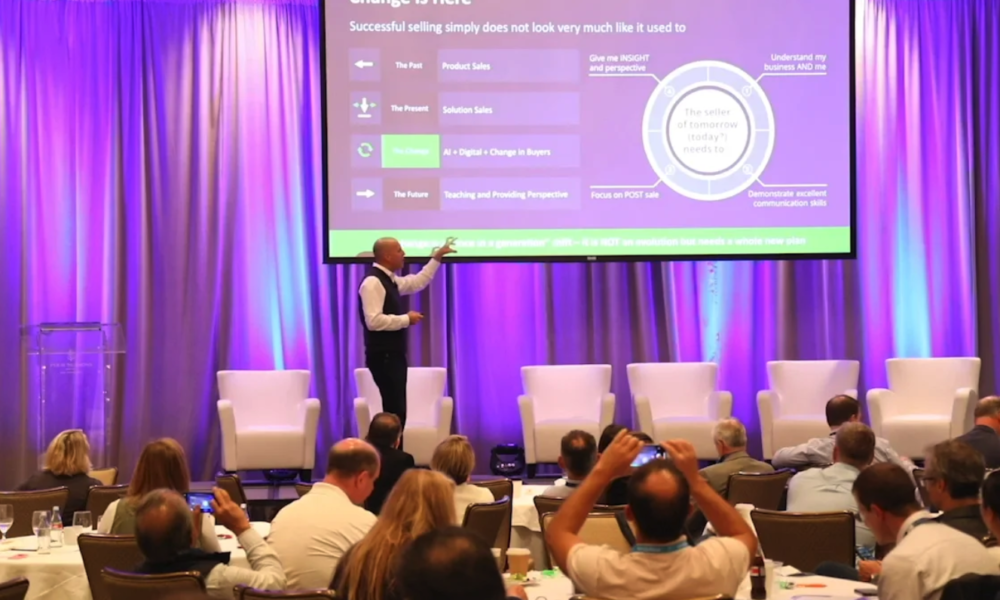Your First 100 Days As a Sales Enablement Leader (Part 2)
3.9K Views | 13 Min Read
After establishing a solid foundation for the sales enablement function to grow from, enablement leaders need to focus on formalizing and amplifying their approach. Here are steps to take in the second half of your first 100 days as a sales enablement leader to bring valuable impact to your organization.
Weeks 7-8
How You Sell, Win and Lose
Evaluate your sales process and sales methodology
Take a close look at your sales process and sales methodology. Every company has a sales process of some description, but not all will be underpinned by a sales methodology. Dig into the sales process to understand if it works and what could be improved.
The value of a sales methodology is that it provides a framework that underpins all your sales activity by creating a repeatable, scalable, and practical approach. If you have a sales methodology in place, validate that it’s working. If it’s not, or if you don’t have one, reach out to vendors to learn more about their offering.
However, rolling out a successful sales methodology is a lengthy endeavor, requiring significant change management. Start looking at vendors, but understand that it typically takes at least six months to launch a sales methodology – often longer. Also, be cognizant of when is a good and bad time to roll out a sales methodology.
Understand the competitive landscape
At this stage, you should meet with the competitive intelligence team and really dig into the competitive landscape. The idea here is to understand why your company wins and loses deals, gain insight into competitors, as well as their strengths and weaknesses. You should also look to identify trends and set up win/loss analysis if that’s not already in place. Producing a win/loss analysis on a regular cadence will help inform your sales enablement approach and is always a wise investment.
During this discussion, you should also establish how competitors are categorized, as well as how and when competitive updates are shared with the sales organization.
Weeks 9-10
Your Team, Communication, and Technology
Evaluate team structure and responsibilities
By now you will have developed a deep understanding of your team, how they’re organized, their roles and responsibilities, as well as strengths and weaknesses. You’ll also know the challenges that the sales organization faces and how to overcome them. Using this insight, you should begin thinking about the following questions:
- What’s the ideal structure of your sales enablement team?
- Is your team set up to achieve its goals?
- What does your team need in order to achieve its goals?
My advice is to forget about the current structure of your sales enablement team. Instead, you should start by writing down what your ideal sales enablement team looks like and work backward from there. Once you’ve established this, assign current team members to roles and identify gaps where you will need to make hires.
At many companies, the word “reorganization” is a synonym for layoffs, but it shouldn’t be that way. Reorgs can be necessary in order to ensure companies are set up for growth and success in the coming year. Don’t be afraid to tear up the existing team structure and start from scratch. The creation of a sales enablement function is often a golden opportunity to draw a line in the sand and reimagine existing structures and processes.
Evaluate sales enablement communication
Now is also a good time to evaluate sales enablement communication. Communication matters, and the success (or failure) of a sales enablement function is intertwined with its ability to influence a sales organization and change behavior. A sales enablement function doesn’t manage sales reps, so instead, it must persuade, cajole, and influence in order to impact behavior. Despite this, strategic and planned communication is often overlooked and undervalued.
You should look at existing communication and consider whether it meets the needs of your key stakeholders. The way your team communicates will vary and depends largely on your company culture. However, as a starting point, leverage a wiki, team meetings, weekly standups, biweekly meetings, monthly meetings, newsletters, podcasts, videos, and offsite meetings.
Evaluate your sales enablement tech stack
By this stage, you will likely have had many business development reps emailing about their company’s software and how it will help your team achieve its goals. However, you should resist the urge to buy for now. Instead, the first step should be to evaluate your existing sales enablement tech stack. In short, take the time to truly understand your needs and current tech stack before buying more software.
Follow these four steps before speaking with technology vendors:
- Understand the jobs to be done – what activities are sales reps doing? How can you help the sales organization?
- Audit existing technology – what software do you currently have? Does it meet your needs? If not, why does it not meet your needs?
- Define your needs – what does your sales organization truly need?
- Agree what functionality is essential and what is nice to have – what functionality must the software have?
Purchasing sales enablement software can be challenging. Sales enablement is often poorly defined and subsequently misunderstood, so there are many technologies positioned as “sales enablement” that have very different applications.
Broadly speaking, there are eight categories of products that can be described as sales enablement technology. These tools all have different use cases and can be the building blocks of a sales enablement technology stack at your company:
- CRM
- LMS
- Learning reinforcement
- Sales coaching
- Sales readiness
- Sales productivity
- Sales engagement
- Sales asset management
Again, first spend time uncovering your needs, rather than thinking about specific vendors.
Weeks 11-12
Formalize Your Plan
Create a sales enablement charter
Now is the time to take everything you’ve learned and make some important decisions. Sales enablement charters are currently in vogue among the sales enablement community, but despite the hype, they play an important role and typically, signal a high level of sales enablement maturity.
The process of building a formal approach and charter is important, as it involves uncovering and understanding the challenges facing a sales organization, which in turn gives the sales enablement team valuable insight into solving them. This is why a sales enablement charter is valuable.
Indeed, research for the 2019 State of Sales Enablement report supports this. It shows that organizations with a formal sales enablement approach and charter significantly outperform businesses which adopt an ad-hoc/one-off project approach (49% win rate vs. 43% win rate).
Create a sales enablement strategy
Based on everything you’ve learned, it’s time to start building a sales enablement strategy. At a high level, the strategy should convey what your team does, how it does it, goals and key initiatives for the year ahead.
While there’s no industry-wide agreement on what a sales enablement strategy should include, some of the most important components are:
- Mission
- Strategy
- Serving
- Plays
- Targets
- Responsibilities
- Omissions
Below is an example of a simplified one-page strategic plan that should be created each year. They can be published on the company wiki for all employees to see, question, and provide feedback on. These documents are a hugely valuable tool for a number of reasons – they communicate in simple terms what can often be a complex area. But the real value of these plans is that they drive alignment – they make it easy to see what each team, department, and organization is working on, omitting, and their respective goals.

Set sales enablement goals
There are a number of sales enablement metrics you can track, but make sure your goals are measurable, attributable, and tied to revenue. Let’s be honest – when it comes to winning an argument, revenue trumps everything else.
The best sales enablement teams are laser-focused on revenue, whether that be quota attainment, influenced revenue, productivity per rep (PPR), or another sales related metric. They have figured out that by focusing on revenue they will have the biggest impact.
Decide on your omissions
This is the less fun part of being a sales enablement leader, but it’s no less important. A key part of leadership is being able to have tough conversations and deliver bad news. During this stage, decide on what you’re going to omit.
Put simply, omissions are the projects that will not be funded each year or the teams that won’t receive sales enablement support. There is rarely a lack of good ideas and work to be found, but it is important to decide what won’t be tackled or supported. By clearly communicating your omissions you can help drive alignment and set the right expectations with teams and stakeholders.
Develop a tool to prioritize
Many people see the creation of a sales enablement team as a “silver bullet”, but it’s important to have a tool to prioritize work, which is then shared with the business. This transparency will help everyone see how you prioritize work and make decisions. It’s important to remain focused on what will have the biggest impact.
One useful tool is a 2×2 grid, pictured below, to prioritize work – while people may be disappointed that their pet project is not being tackled, they are often accepting, albeit begrudgingly of the decision when it’s plotted on the grid.

Make the business case for your investments
By now you will have realized that there is no shortage of ways to spend your sales enablement budget. But to gain buy-in from your boss and CFO approval, it’s important that you make a compelling business case. The key areas to keep in mind are:
- What value will this investment provide to the business? Is the value aligned with the company’s strategy and goals? People often fall into the trap of thinking solely in terms of cost, rather than how much value an investment will create.
- What’s the opportunity cost if you don’t make this investment? Will you lose ground or market share to the competition?
- What onboarding and professional services are provided to ensure the rollout of this investment is a success? Buying a product or service doesn’t solve anything – you need to provide reassurance that there are resources available to ensure a successful deployment.
Weeks 13-14
Ready to Go
From planning to action
This is the truly exciting part. You’ve learned about the company, laid the groundwork and built a strategy to help your sales organization win. Now it’s time to get down to business and do the following:
- Organize your team to achieve its goals and begin hiring
- Share your sales enablement charter and strategy
- Announce the projects you’re going to prioritize
- Rollout new communication process
- Engage vendors
- Keep focused!
This process for having a successful first 100 days is by no means the only way to go about doing it, but hopefully, it can help others figure out how to build a high performing sales enablement function. By sharing what we, as sales enablement professionals are doing and inviting critical feedback, we can improve results and help elevate the role to where it truly belongs.










